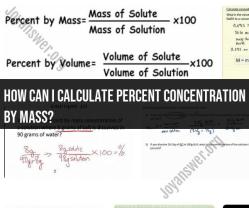What are the different ways to investigate density?
Exploring density through investigation methods can be a fascinating and educational experience for students and learners of all ages. Density is a fundamental concept in physics and science that helps us understand how different materials interact with each other. Here's a comprehensive guide to conducting density investigations:
1. Understanding Density:Density is the measure of mass per unit volume of a substance. The formula for density is:Density (ρ) = Mass (m) / Volume (V)
2. Materials Needed:
- Various objects of different shapes, sizes, and materials
- Balance or scale to measure mass
- Measuring tools (ruler, calipers) to measure dimensions
- Graduated cylinder or other containers for measuring volume
- Water and beakers for water displacement method (if using)
3. Investigation Methods:
a. Direct Measurement:
- Select an object and measure its mass using a balance.
- Measure the object's dimensions (length, width, height) using measuring tools.
- Calculate the object's volume using the appropriate formula (e.g., volume of a cube = side x side x side).
- Calculate the density using the formula ρ = m/V.
b. Water Displacement Method:
- Fill a graduated cylinder with a known amount of water.
- Carefully submerge the object in the water, recording the change in water level (displacement).
- Measure the mass of the object using a balance.
- Calculate the volume of the object using the water displacement (change in water level).
- Calculate the density using the formula ρ = m/V.
c. Layered Liquids:
- Prepare liquids of different densities, such as water, oil, and honey.
- Carefully pour each liquid into a transparent container, creating distinct layers.
- Gently place objects of different densities into the liquids and observe their positions in the layers.
- Discuss why some objects float while others sink based on their densities.
4. Variables to Explore:
- Compare the densities of different objects made from the same material.
- Compare the densities of objects made from different materials.
- Investigate how changing the shape or size of an object affects its density.
- Explore the density of liquids and their relative positions when layered.
5. Analysis and Discussion:
- Compare and contrast the densities of different objects.
- Discuss why some objects float while others sink.
- Relate your findings to real-world scenarios (e.g., ships, hot air balloons).
- Reflect on the importance of density in various fields of science and engineering.
6. Extensions:
- Explore Archimedes' principle and buoyancy in relation to density.
- Investigate how temperature affects the density of liquids.
- Analyze natural phenomena related to density (e.g., icebergs, magma chambers).
7. Safety Considerations:
- Use caution when working with liquids and fragile objects.
- Ensure proper handling of equipment and measurement tools.
- Follow safety guidelines and protocols for using balances and other lab equipment.
Density investigations offer hands-on learning experiences that encourage critical thinking and problem-solving. They also provide practical insights into the physical properties of different materials and their behavior in various contexts.












